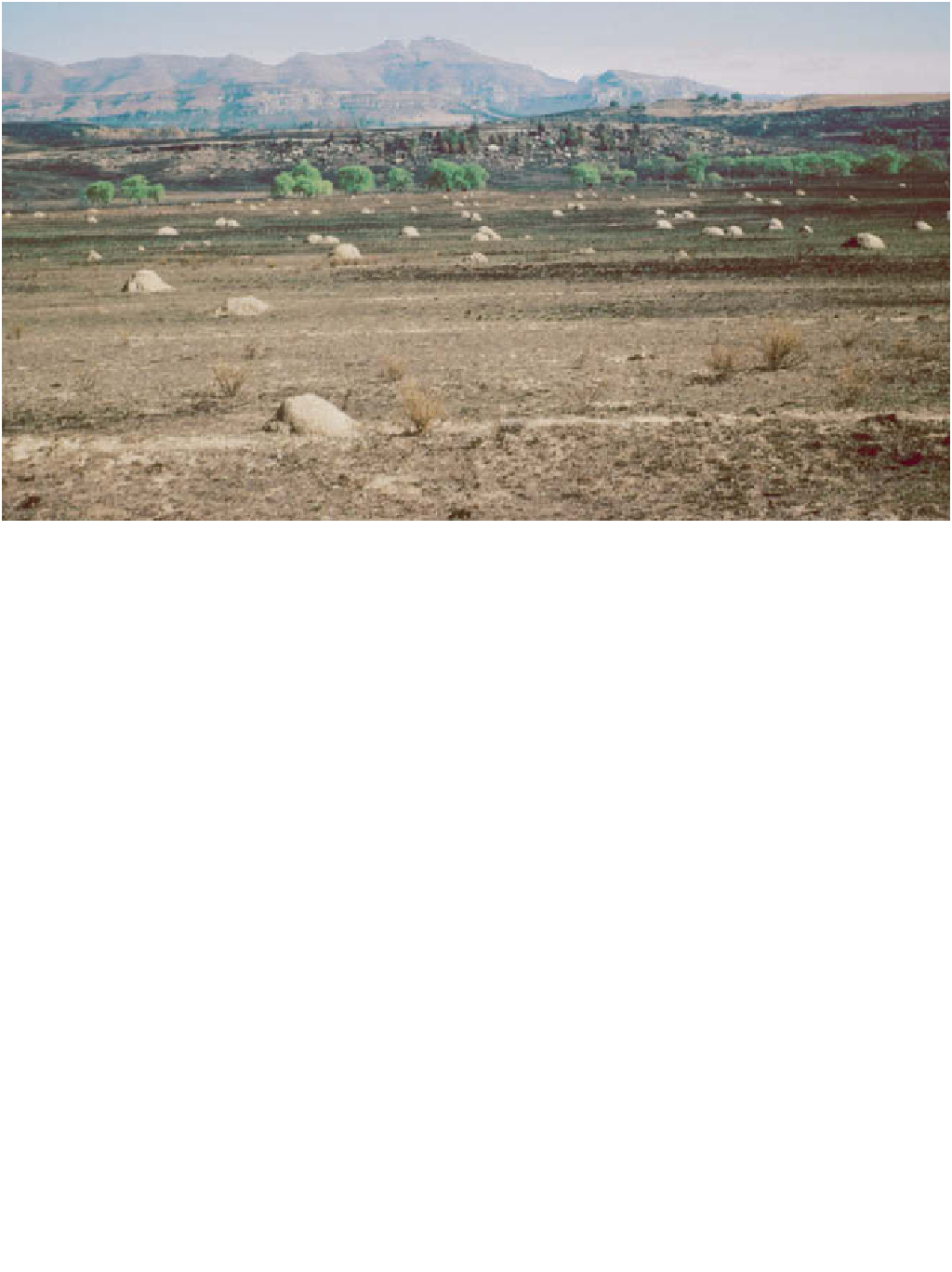Geoscience Reference
In-Depth Information
Plate 26.7
A field full of small termite mounds with burnt grassland, eastern Orange Free State, South Africa.
Photo: Peter Smithson
2
Seasonal rivers which are dammed to provide adequate
storage to survive the dry season (and perhaps several
drier-than-average years if the dam is large).
The use of rivers as a source of water goes back to
biblical times or even earlier. Systems appear to have been
developed independently in at least three locations -
south-west Asia by 5500
BC
, Peru by 1200
BC
and China
in 350
BC
. The amount of water in the river would
determine how much could be used for agriculture.
Variations in levels would be reflected in variations in
crop yield.
Figure 26.6
shows how this relationship was
appreciated by the ancient Egyptians. If the river flood
level was at twelve ells there was insufficient water for
crops, and hunger or famine prevailed. As water levels rose
the harvest was likely to improve, so that with a sixteen-
ell flood there was abundance. However, the diagram also
demonstrates the delicate balance between too little and
too much water. With flood levels above eighteen ells the
river would burst its banks and cause disaster.
The methods of extracting water from the river varied.
As the river level would normally be lower than the land
on which the crops were being grown, there had to be
some method of lifting water. It might not be necessary
in mountainous areas where water could be extracted at
higher levels, then allowed to flow naturally down
channels to the irrigated areas, but in lowland areas like
Egypt, Iraq and Niger devices to lift water had to be
3
The diversion of water in aqueducts from wetter areas,
such as the Los Angeles aqueduct.
4
Ground water, pumped to the surface artificially, by
artesian pressure or through underground tunnels
from the water table.
5
Desalinization can be used to produce drinkable water
but it is viable only where energy costs are low or other
methods are impossible.
Let us have a look at these elements in turn to examine
how the varying availability of water can affect the nature
of water resources and their exploitation in an area.
Rivers
Many rivers begin their course in relatively wet mountain
areas which provide sufficient discharge for them to flow
into dryland areas. Not all of them reach the sea, as natural
loss or human exploitation depletes the flow until it
disappears into its dry river gravels or swamps, like the
Okavango in Botswana, or an internal lake basin such as
the Jordan in Israel.









































